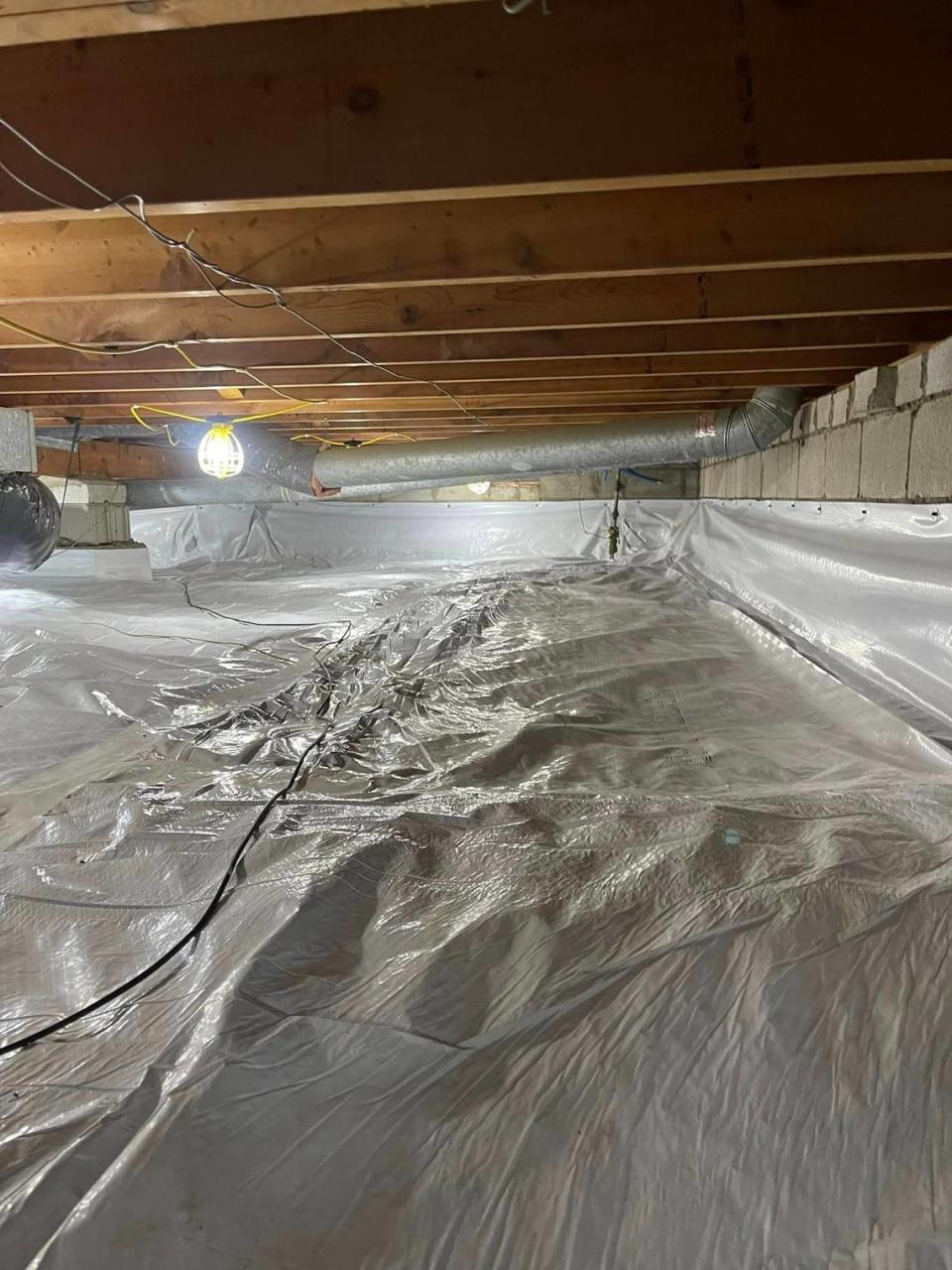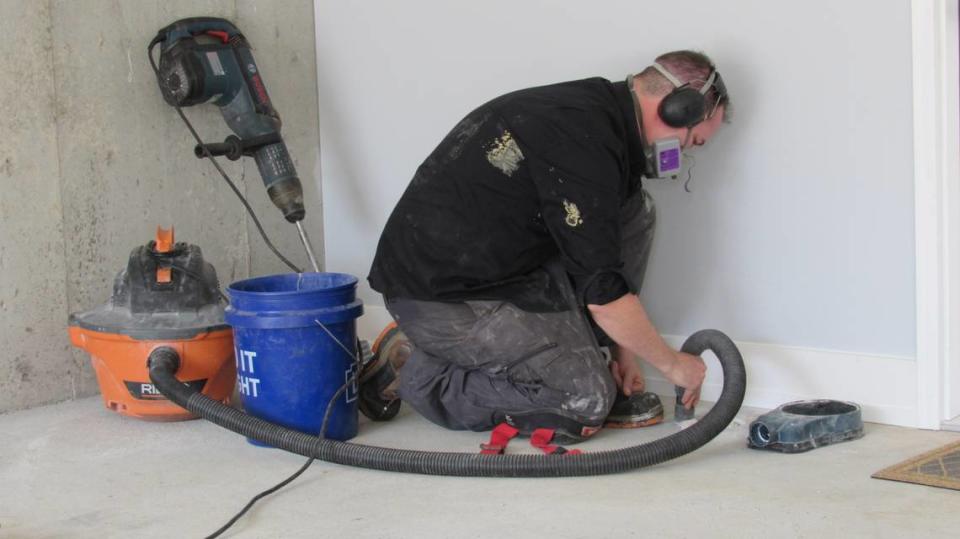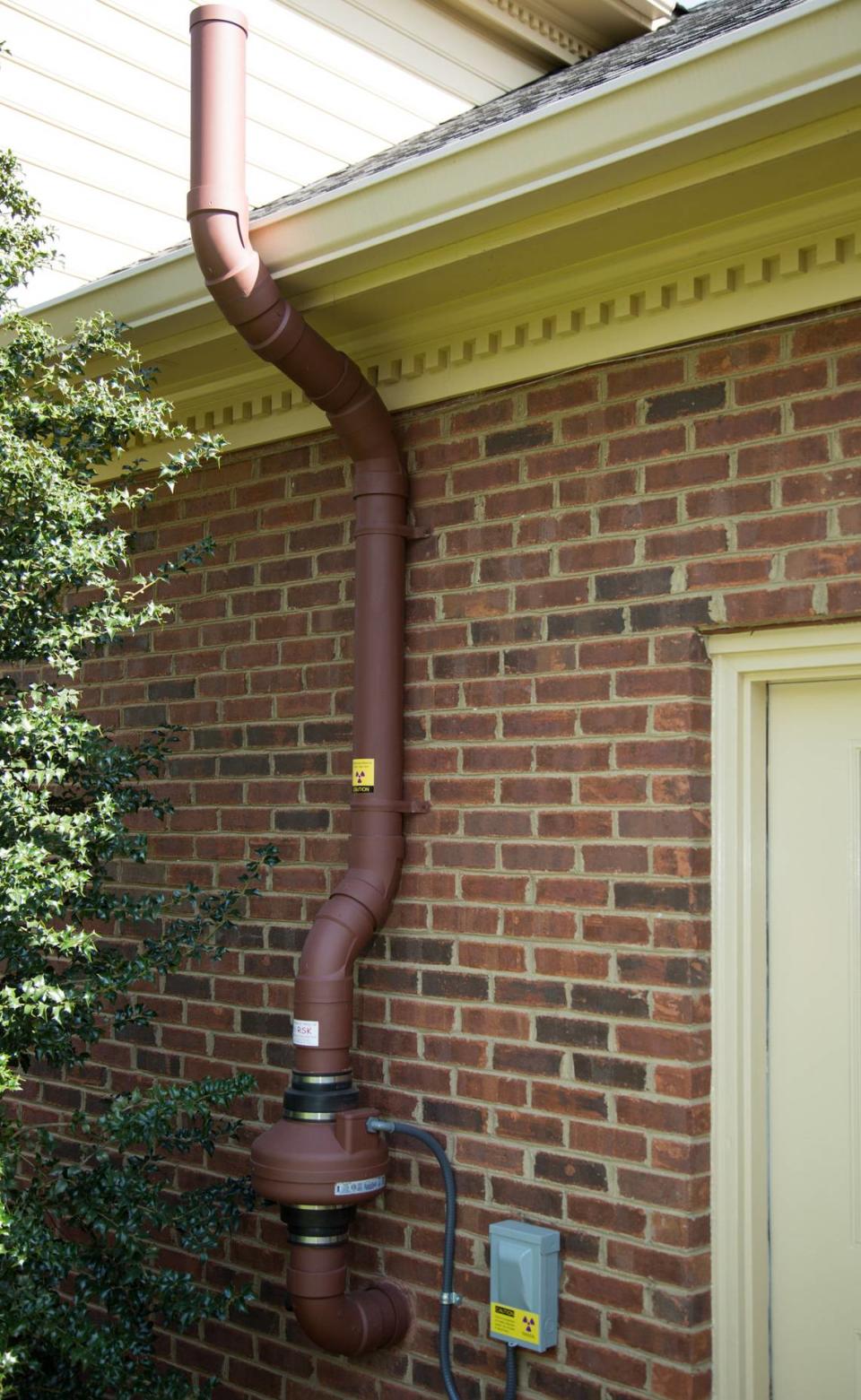Kentuckians may be unaware of this health threat in their homes. Here’s what to know
Many people in Kentucky are likely being exposed to a health threat in their home that can’t be spotted without a test.
It’s a gas called radon, a key cause of lung cancer in Kentucky and the nation.
“Over a large part of Kentucky, there is a significant potential to have a high level of radon in your house,” said William C. Haneberg, director of the Kentucky Geological Survey.
An estimated 42% of all buildings in Kentucky — and more than 65% in some areas — have elevated radon levels, compared with 7% nationally, according to the Kentucky Association of Radon Professionals.
Despite the potential risk, health officials say many people in Kentucky aren’t aware they might be getting exposed to radon at home.
Here are some things to know about radon and what you can do about it.
WHAT IS IT?
Radon is a radioactive gas that has no color, odor or taste.
It doesn’t cause any immediate health problems as other contaminants such as mold or carbon monoxide can, and there is no visible damage as with termites, so it can seep into a house without residents being aware.
Ellen Hahn, a professor in the University of Kentucky College of Nursing and director of a research organization called BREATHE that advocates for clean air and healthy environments, calls radon “an invisible enemy.”
That may make it harder for people to understand the potential danger, but the risk is real.
“We have very high rates of radon here,” Hahn said.
The U.S. Environmental Protection Agency (EPA) classifies much of the state as being in a zone in which people are at the highest risk for radon exposure and radon-related health problems.

Aaron Zimmerman, 47, said he had never heard of radon before he bought a house in Pulaski County a few years ago and a test showed elevated radon.
Zimmerman followed up with a test kit through a study being conducted by Hahn and other researchers, and it confirmed the house had an extremely high level of radon.
Radon levels are measured by units of radioactivity per air volume, called picoCuries per liter, or pCi/L.
The federal government suggests taking action to reduce radon a level of 4 and the World Health Organization at 2.7. The level in Zimmerman’s house was in the 70s.
Zimmerman had a system installed in the house to remove the radon.
HOW DOES IT OCCUR?
Radon is formed by the breakdown of uranium in soil and rock, and is found in every region of the country, according to the Kentucky Geological Survey.
When the uranium breaks down it turns into radon gas, which can then seep into buildings through cracks in basement floors, foundations, crawlspaces and other openings.
The level of radon in homes and other buildings can vary widely within counties and even within the same neighborhood, based on factors such as the underlying type of rock and soil; whether a house has a basement or crawlspace; and the age of the house, with newer houses having a higher potential for radon to build up because they may be sealed better.

The Kentucky Geological Survey and scientists with the BREATHE program at the University of Kentucky used results from home radon tests kits to develop a detailed, interactive map on radon potential.
BREATHE also has information on radon levels by county.
WHAT IS THE RISK?
Radon is potentially hazardous because as it breaks down, it releases radioactive particles that can be inhaled and damage lung tissue over time.
Many people are aware that smoking is the leading cause of lung cancer, but radon is the second-leading cause, as well as the top cause of cancer among people who have never smoked, according to the U.S. Environmental Protection Agency.
And smoking, or exposure to secondhand smoke, combined with exposure to radon creates an even higher risk of lung cancer.
Being exposed to an indoor radon level of 4 pCi/L equals smoking eight cigarettes a day, the Kentucky Association of Radon Professionals says, while a level of 10 equals smoking a full pack a day.
Lung cancer related to radon results in an estimated 21,000 deaths each year in the U.S., according to the American Lung Association.
In Kentucky, there are 1,033 new radon-induced lung cancer cases each year, according to estimates by AARST, an organization of radon professionals.
Kentucky has the highest age-adjusted lung cancer rate in the nation, AARST says.
Lindi Campbell found out about the danger the hard way.

Campbell, 58, was fit, active and had never smoked, but had to have two lobes of her right lung removed in December 2017 as a result of developing lung cancer.
Campbell said she grew up in Lexington in a house where she was exposed to secondhand cigarette smoke and radon.
After she was diagnosed with cancer, she had her childhood home tested. The results showed a radon level that was the equivalent of smoking 40 cigarettes a day, she said.
“When I was diagnosed with lung cancer as a lifelong Kentuckian who had never smoked, I was shocked to learn high levels of radon in my childhood home were likely responsible for my diagnosis,” Campbell said.
Campbell now heads Breath of Hope KY Inc., which works to raise awareness about lung cancer, reduce the stigma around the disease and raise money for research.
WHAT CAN I DO ABOUT RADON?
First, be informed.
Radon information is available through several sources, including BREATHE; the Kentucky Geological Survey; the Kentucky Radon Program; the U.S. Environmental Protection Agency; the American Lung Association.
Health officials also recommend testing your home.
“Everyone needs to test,” Hahn said. “There’s no risk-free level of radon.”
Hahn said so far, only 13 of every 10,000 houses in Kentucky have been tested.
Free test kits are available at many county health departments, and people can also request a kit through the Kentucky Radon Program in the Cabinet for Health and Family Services.
People in Pulaski, Rowan, Logan and Christian counties can check out test kits at public libraries, with a valid library card, as part of an on-going study by BREATHE.
People can also buy test kits at home-improvement stores or online.

Companies that install systems to pull radon out of homes can also test for the gas.
And finally, if a test shows your home has levels of radon above 4 pCi/L, health officials recommend having a certified company install a system to remove it from the house, called a radon mitigation system.
In a basement, such a system would involve drilling a hole or holes into the floor to create a space under the floor, then installing piping and a fan to pull out radon.
“You’re trying to cut the radon off at the source,” said Michael Rumpke, an owner of Alpha Radon Remediation, which is based in Lexington but works in areas outside Fayette County as well.
A list of companies certified to test for radon and install a system to remove it from homes and other buildings is available through the National Radon Proficiency Program.
IS IT EXPENSIVE TO MITIGATE RADON?
The cost varies based on factors including the level of radon and the type of system needed to remove it from the house.
Hahn said the work can be done for less than the cost of many other types of home repairs.
Tracy Howard said it cost $1,300 to have Alpha Radon Remediation install an exhaust system in the basement of her house in Stanford on May 24.
Howard got a free test kit from the local health department and the results showed a radon level of 4.2, just over the limit at which the EPA recommends installing a system to reduce the radon level.
Howard, a nurse who works from home to do remote patient monitoring, shares the house with her husband and their daughter and 4-year-old grandson. She wanted to reduce their risk of exposure to the cancer-causing substance.
To her, it was worth $1,300 to accomplish that.
“I know how dangerous it is,” she said. “Consider the cost of installing the system vs. the cost of getting lung cancer later in life.”

 Yahoo Sports
Yahoo Sports 